AI Image Prompts for Animals
Explore AI generated designs, images, art and prompts by top community artists and designers.

A modern , minimalist logo for a fintech bank named "VECTOR". The design should be based on a stylized , geometric letter "V". The left side of the "V" should be a solid , stable vertical line , symbolizing a foundation. The right side should be a dynamic , upward-slanting diagonal line , creating a sense of growth and direction. Combine these elements into a single , cohesive , and elegant abstract mark. On a white background use a deep , trustworthy blue (#0F2B5B) as the primary color , with an option to add a vibrant orange gradient (#FF7A00 to #FFB800) as an accent on the diagonal line to symbolize energy. The style is clean , professional , and sleek , suitable for a digital-first financial institution. No icons of coins , globes , or animals. --style raw --v 6.0 ,

A modern , minimalist logo for a fintech bank named "VECTOR". The design should be based on a stylized , geometric letter "V". The left side of the "V" should be a solid , stable vertical line , symbolizing a foundation. The right side should be a dynamic , upward-slanting diagonal line , creating a sense of growth and direction. On a white background use a deep , trustworthy blue (#0F2B5B) as the primary color , with an option to add a vibrant orange gradient (#FF7A00 to #FFB800) as an accent on the diagonal line to symbolize energy. The style is clean , professional , and sleek , suitable for a digital-first financial institution. No icons of coins , globes , or animals. --style raw --v 6.0 ,

A modern , minimalist logo for a fintech bank named "VECTOR". The design should be based on a stylized , geometric letter "V". The left side of the "V" should be a solid , stable vertical line , symbolizing a foundation. The right side should be a dynamic , upward-slanting diagonal line , creating a sense of growth and direction. Combine these elements into a single , cohesive , and elegant abstract mark. On a white background use a deep , trustworthy blue (#0F2B5B) as the primary color , with an option to add a vibrant orange gradient (#FF7A00 to #FFB800) as an accent on the diagonal line to symbolize energy. The style is clean , professional , and sleek , suitable for a digital-first financial institution. No icons of coins , globes , or animals. --style raw --v 6.0 ,

A modern , minimalist logo for a fintech bank named "VECTOR". The design should be based on a stylized , geometric letter "V". The left side of the "V" should be a solid , stable vertical line , symbolizing a foundation. The right side should be a dynamic , upward-slanting diagonal line , creating a sense of growth and direction. Combine these elements into a single , cohesive , and elegant abstract mark. Use a deep , trustworthy blue (#0F2B5B) as the primary color , with an option to add a vibrant orange gradient (#FF7A00 to #FFB800) as an accent on the diagonal line to symbolize energy. The style is clean , professional , and sleek , suitable for a digital-first financial institution. No icons of coins , globes , or animals. --style raw --v 6.0 ,

A whimsical and detailed illustration of three anthropomorphic forest animals sitting at a wooden table playing cards in a cozy woodland cabin. A large bear sits on one side , holding his cards with a furrowed brow and glaring angrily at his hand. Opposite him , a clever-looking fox smirks mischievously while holding her cards and glancing sideways at the bear. Next to her , a nervous-looking rabbit clutches his cards tightly , his wide eyes staring fearfully at the fox. The table is cluttered with cards and wooden mugs , and the warm cabin is lit by a glowing lantern. Expressive characters , cozy lighting , cartoonish but rich detail , 16:9 aspect ratio. ,

A whimsical and detailed illustration of three anthropomorphic forest animals sitting at a wooden table playing cards in a cozy woodland cabin. A large bear sits on one side , holding his cards with a furrowed brow and glaring angrily at his hand. Opposite him , a clever-looking fox smirks mischievously while holding her cards and glancing sideways at the bear. Next to her , a nervous-looking rabbit clutches his cards tightly , his wide eyes staring fearfully at the fox. The table is cluttered with cards and wooden mugs , and the warm cabin is lit by a glowing lantern. Expressive characters , cozy lighting , cartoonish but rich detail ,

A cinematic black-and-white scene set in a desolate wasteland covered with the corpses of dead animals. The main character , a dark and shadowy crow , stands fully visible on top of an animal’s body , appearing sorrowful and contemplative. The atmosphere is bleak , melancholic , and emotionally heavy. Cinematic lighting with deep contrast and dramatic shadows enhances the somber mood , creating a haunting and emotional visual tone. ,
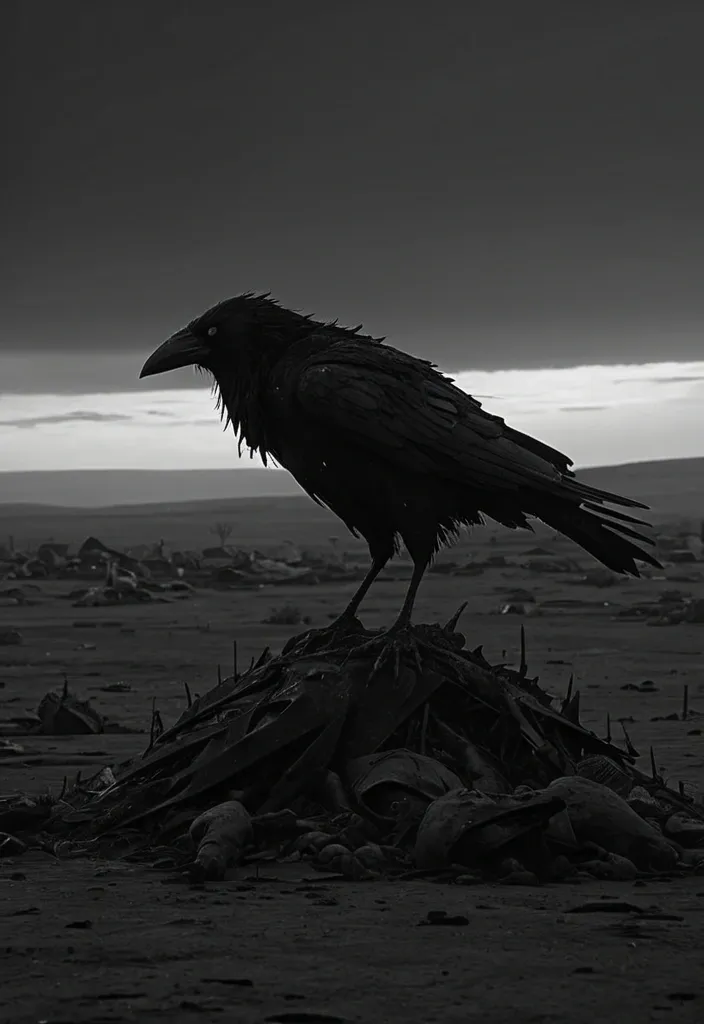
A cinematic black-and-white scene set in a desolate wasteland covered with the corpses of dead animals. The main character , a dark and shadowy crow , stands fully visible on top of an animal’s body , appearing sorrowful and contemplative. The atmosphere is bleak , melancholic , and emotionally heavy. Cinematic lighting with deep contrast and dramatic shadows enhances the somber mood , creating a haunting and emotional visual tone. ,

A cinematic black-and-white scene set in a desolate wasteland covered with the corpses of dead animals. The main character , a dark and shadowy crow , stands fully visible on top of an animal’s body , appearing sorrowful and contemplative. The atmosphere is bleak , melancholic , and emotionally heavy. Cinematic lighting with deep contrast and dramatic shadows enhances the somber mood , creating a haunting and emotional visual tone. ,

Generate a Halloween themed picture of a nighttime garden and a house. Process the music video from Jamie Woon - Night Air for image inspiration. Include eerily glowing night plants and animals (for example , insects , bugs , snails). The house has Halloween decorations on the walls , windows , and the front door. Include Jack O' Lanterns , spiderwebs , and glow-in-the-dark objects. ,

A fairy tale book illustration of a book inside a book inside a book. The book is placed on a pedestal in a candle lit library. The pages look like very old tome pages. The pages use the very old illumination technique and design of early Anglo-Saxon scribes and monks (for example , the Domesday Book). The images depict animals. The illuminations are glowing with an ethereal golden-green light. The rays of light reach out from the pages of the book. The scribe standing in front of the pedestal has its back turned to the viewer. The scribe wearing a dirty white linen robe with a huge cloak. There is a quill in the scribe's hand and a pot of glowing golden ink next to the tome. ,

We have learnt in the earlier grades of Science that the Sun gives us light and heat. It is the primary source of energy for almost everything on Earth. Energy from the Sun provides energy for plants to grow , which , in turn , feeds animals and humans. It also drives water cycles which help in the redistribution of water on the Earth. The Earth works as a connected system where land , water , air , and living things interact closely. Processes such as heating by the Sun , the movement of air , water , and the cycling of essential elements are all linked together. A change in one part of the system often affects the others. These natural processes depend on a balance , and if this balance is disturbed—through overuse of resources , pollution , or climate change—the whole system can be affected in harmful ways. ,

The Garden of Eden in all its beauty: tall trees with colorful fruits , vibrant flowers , clear rivers flowing gently , birds flying , and animals roaming peacefully. A breathtaking paradise scene. Rendered in a realistic 3D cartoon animation style , with vivid colors , detailed shading , and a serene atmosphere. ,

mud-brick and stone houses with flat roofs , narrow winding streets , central water well , villagers in wool and linen garments , domestic animals like goats and chickens roaming , date palms and fig trees nearby , smoke rising from hearths , distant hills and desert landscape , dawn , clear , summer , Digital Painting , 4K ,

Orcinus Megalsaurus is a colossal marine hybrid stretching between 40 to 60 feet in length , weighing an imposing 50 to 75 tons. Its body is a streamlined fusion of powerful marine predators and ancient reptiles , designed for both speed and durability. Head & Jaws: Massive and robust jaws reminiscent of Mosasaurus Hoffmannii , lined with dozens of large , serrated teeth capable of slicing through the toughest prey. The jaw muscles are reinforced for crushing power , with an agile , flexible skull allowing it to swallow large creatures whole. Body: Covered in overlapping , bony , and tough Arapaima-inspired scales that provide formidable protection while maintaining flexibility for swift movement. The coloration is a gradient of deep oceanic blues and dark greys , with subtle mottled patterns for camouflage in deep waters. Spines & Armor: Sprouting venomous , long , sharp spines along its dorsal ridge , inspired by the Crown-of-Thorns starfish , these spines serve as both defense and offense , delivering painful , venomous wounds to predators or prey. Flippers & Tail: Enormous paddle-like front flippers derived from Archelon Ischyros , granting powerful swimming strokes. Its tail is flattened and ends in a strong fluke like the Mosasaurus , enabling bursts of speed up to 82 mph , matching the fastest sea animals. The tail's blubber and flexible musculature provide a springlike propulsion effect. Skin & Blubber: Beneath the scales lies a thick layer of dolphin-like blubber , providing insulation , buoyancy , and rapid healing properties. This blubber contains antimicrobial compounds that prevent infection from wounds and smooth the skin for hydrodynamic efficiency. Sensory & Communication: Equipped with the acute echolocation and vocalization abilities of Bigg’s Killer Whales , Orcinus Megalsaurus uses short-range , stealthy communication to coordinate ambush attacks. Its hearing and sonar are highly advanced , allowing it to detect prey at great distances. Mucus Secretion: When threatened , it can release a thick mucus cloud inspired by the Atlantic hagfish , confusing predators and protecting its skin from abrasion and parasites. Locomotion on Land: Although primarily aquatic , it can scoot or slide on land for short distances , using its powerful flippers akin to a leopard seal , allowing it to traverse beaches or shallow coasts. Regeneration: Thanks to the axolotl gene integration , Orcinus Megalsaurus can regenerate lost limbs , spines , and even parts of its internal organs , making it extraordinarily resilient. Abilities: Speed & Agility: Capable of reaching speeds of 45 to 82 mph in short bursts , making it one of the fastest marine predators ever. Its rigid pectoral fins can be tilted back like a black marlin to reduce drag during high-speed chases. Venomous Defense: Venomous spines deter attackers and can incapacitate prey or enemies with painful wounds. Stealth & Teamwork: Utilizes orca-like stealth and coordinated hunting tactics , ambushing prey with precision and communication that avoids detection. Healing & Immunity: Blubber layer accelerates wound healing and provides antimicrobial defense , ensuring survival from injuries sustained during hunts or fights. Mucus Defense: Can deploy mucus clouds to escape or confuse predators and parasites. Environmental Adaptability: Tolerates a wide range of salinity , from freshwater estuaries to deep oceanic waters , allowing it to exploit diverse hunting grounds. ,
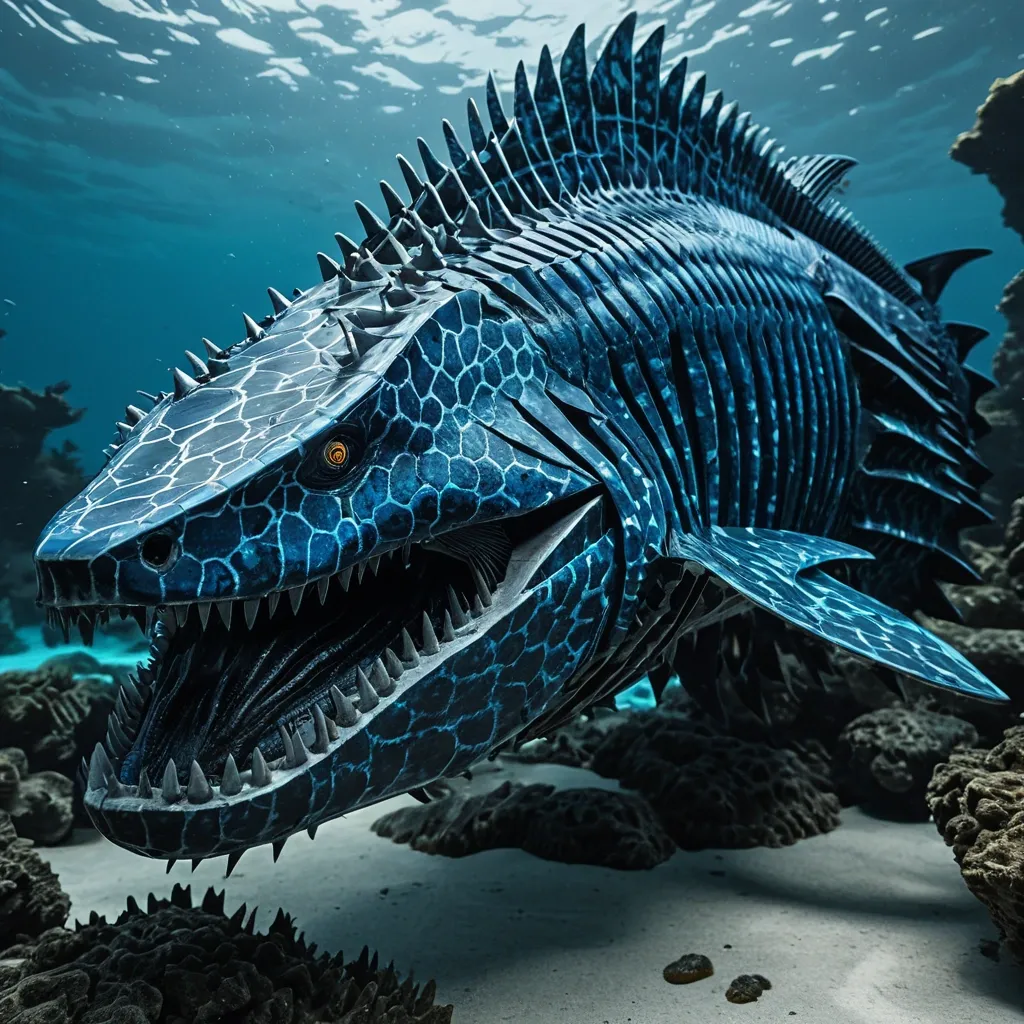
Orcinus Megalsaurus is a colossal marine hybrid stretching between 40 to 60 feet in length , weighing an imposing 50 to 75 tons. Its body is a streamlined fusion of powerful marine predators and ancient reptiles , designed for both speed and durability. Head & Jaws: Massive and robust jaws reminiscent of Mosasaurus Hoffmannii , lined with dozens of large , serrated teeth capable of slicing through the toughest prey. The jaw muscles are reinforced for crushing power , with an agile , flexible skull allowing it to swallow large creatures whole. Body: Covered in overlapping , bony , and tough Arapaima-inspired scales that provide formidable protection while maintaining flexibility for swift movement. The coloration is a gradient of deep oceanic blues and dark greys , with subtle mottled patterns for camouflage in deep waters. Spines & Armor: Sprouting venomous , long , sharp spines along its dorsal ridge , inspired by the Crown-of-Thorns starfish , these spines serve as both defense and offense , delivering painful , venomous wounds to predators or prey. Flippers & Tail: Enormous paddle-like front flippers derived from Archelon Ischyros , granting powerful swimming strokes. Its tail is flattened and ends in a strong fluke like the Mosasaurus , enabling bursts of speed up to 82 mph , matching the fastest sea animals. The tail's blubber and flexible musculature provide a springlike propulsion effect. Skin & Blubber: Beneath the scales lies a thick layer of dolphin-like blubber , providing insulation , buoyancy , and rapid healing properties. This blubber contains antimicrobial compounds that prevent infection from wounds and smooth the skin for hydrodynamic efficiency. Sensory & Communication: Equipped with the acute echolocation and vocalization abilities of Bigg’s Killer Whales , Orcinus Megalsaurus uses short-range , stealthy communication to coordinate ambush attacks. Its hearing and sonar are highly advanced , allowing it to detect prey at great distances. Mucus Secretion: When threatened , it can release a thick mucus cloud inspired by the Atlantic hagfish , confusing predators and protecting its skin from abrasion and parasites. Locomotion on Land: Although primarily aquatic , it can scoot or slide on land for short distances , using its powerful flippers akin to a leopard seal , allowing it to traverse beaches or shallow coasts. Regeneration: Thanks to the axolotl gene integration , Orcinus Megalsaurus can regenerate lost limbs , spines , and even parts of its internal organs , making it extraordinarily resilient. Abilities: Speed & Agility: Capable of reaching speeds of 45 to 82 mph in short bursts , making it one of the fastest marine predators ever. Its rigid pectoral fins can be tilted back like a black marlin to reduce drag during high-speed chases. Venomous Defense: Venomous spines deter attackers and can incapacitate prey or enemies with painful wounds. Stealth & Teamwork: Utilizes orca-like stealth and coordinated hunting tactics , ambushing prey with precision and communication that avoids detection. Healing & Immunity: Blubber layer accelerates wound healing and provides antimicrobial defense , ensuring survival from injuries sustained during hunts or fights. Mucus Defense: Can deploy mucus clouds to escape or confuse predators and parasites. Environmental Adaptability: Tolerates a wide range of salinity , from freshwater estuaries to deep oceanic waters , allowing it to exploit diverse hunting grounds. ,
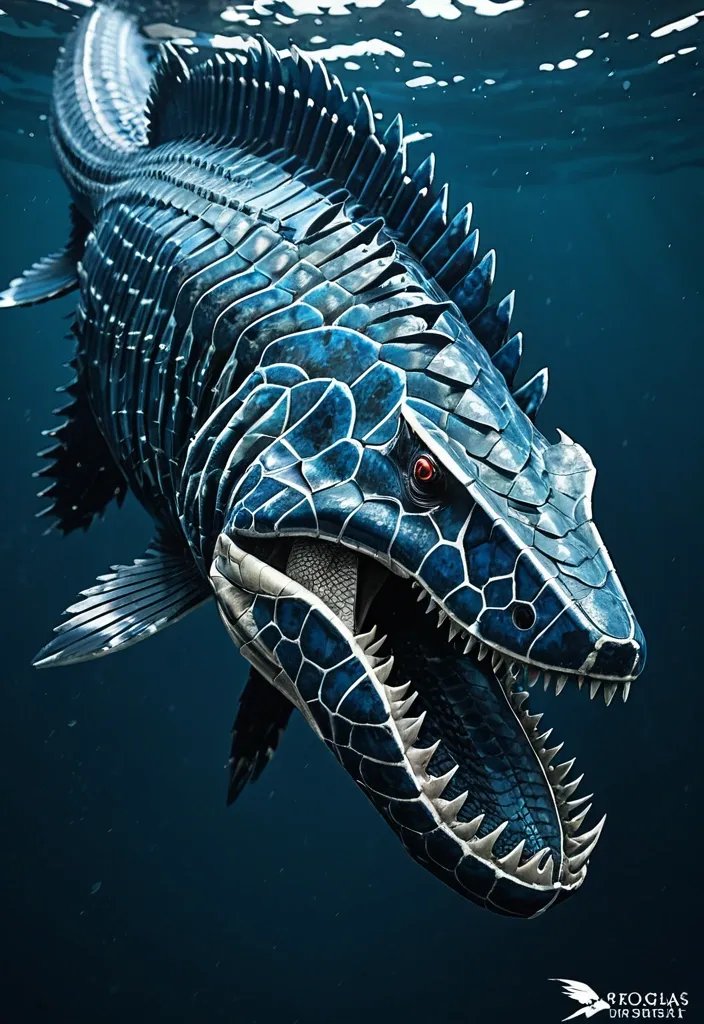
Orcinus Megalsaurus is a colossal marine hybrid stretching between 40 to 60 feet in length , weighing an imposing 50 to 75 tons. Its body is a streamlined fusion of powerful marine predators and ancient reptiles , designed for both speed and durability. Head & Jaws: Massive and robust jaws reminiscent of Mosasaurus Hoffmannii , lined with dozens of large , serrated teeth capable of slicing through the toughest prey. The jaw muscles are reinforced for crushing power , with an agile , flexible skull allowing it to swallow large creatures whole. Body: Covered in overlapping , bony , and tough Arapaima-inspired scales that provide formidable protection while maintaining flexibility for swift movement. The coloration is a gradient of deep oceanic blues and dark greys , with subtle mottled patterns for camouflage in deep waters. Spines & Armor: Sprouting venomous , long , sharp spines along its dorsal ridge , inspired by the Crown-of-Thorns starfish , these spines serve as both defense and offense , delivering painful , venomous wounds to predators or prey. Flippers & Tail: Enormous paddle-like front flippers derived from Archelon Ischyros , granting powerful swimming strokes. Its tail is flattened and ends in a strong fluke like the Mosasaurus , enabling bursts of speed up to 82 mph , matching the fastest sea animals. The tail's blubber and flexible musculature provide a springlike propulsion effect. Skin & Blubber: Beneath the scales lies a thick layer of dolphin-like blubber , providing insulation , buoyancy , and rapid healing properties. This blubber contains antimicrobial compounds that prevent infection from wounds and smooth the skin for hydrodynamic efficiency. Sensory & Communication: Equipped with the acute echolocation and vocalization abilities of Bigg’s Killer Whales , Orcinus Megalsaurus uses short-range , stealthy communication to coordinate ambush attacks. Its hearing and sonar are highly advanced , allowing it to detect prey at great distances. Mucus Secretion: When threatened , it can release a thick mucus cloud inspired by the Atlantic hagfish , confusing predators and protecting its skin from abrasion and parasites. Locomotion on Land: Although primarily aquatic , it can scoot or slide on land for short distances , using its powerful flippers akin to a leopard seal , allowing it to traverse beaches or shallow coasts. Regeneration: Thanks to the axolotl gene integration , Orcinus Megalsaurus can regenerate lost limbs , spines , and even parts of its internal organs , making it extraordinarily resilient. Abilities: Speed & Agility: Capable of reaching speeds of 45 to 82 mph in short bursts , making it one of the fastest marine predators ever. Its rigid pectoral fins can be tilted back like a black marlin to reduce drag during high-speed chases. Venomous Defense: Venomous spines deter attackers and can incapacitate prey or enemies with painful wounds. Stealth & Teamwork: Utilizes orca-like stealth and coordinated hunting tactics , ambushing prey with precision and communication that avoids detection. Healing & Immunity: Blubber layer accelerates wound healing and provides antimicrobial defense , ensuring survival from injuries sustained during hunts or fights. Mucus Defense: Can deploy mucus clouds to escape or confuse predators and parasites. Environmental Adaptability: Tolerates a wide range of salinity , from freshwater estuaries to deep oceanic waters , allowing it to exploit diverse hunting grounds. ,

I make hand-poured candles and need a design for a Candle Care Instruction Card. The card should be aesthetic and minimal , with natural illustrations , like branches or twigs , possibly in the corners or as subtle decorative elements. The style should feel calm , clean , and slightly rustic or nature-inspired. Please include the following text in an easy-to-read serif or handwritten-style font: CANDLE CARE • For the first time , leave the candle burning for at least an hour to avoid ‘tunneling’ and fast ending of the candle • Do not keep the candle lit for more than 4 hours • Trim the wick to 6mm before each use (or remove the burnt part with your hands) • Do not blow out the candle , but cover it with a lid to avoid an unpleasant smell • Keep the candle away from children , animals , and open windows • When not in use , cover the candle with a lid to avoid dust on it • Do not leave a candle unattended if it contains dried flowers to prevent possible ignition ,

Ultra-realistic , high-action scene of a violent fight between a large , muscular dog (like a Rottweiler or Cane Corso) and a powerful tiger in a jungle clearing. Both animals are in motion , mid-fight — claws slashing , teeth bared , fur flying. Dust and leaves swirl around them from the intense movement. The dog lunges toward the tiger with wide jaws , while the tiger counters with a paw strike. The tension is raw and primal. Cinematic lighting , fast motion blur , extreme detail on fur , muscle , and expressions. Dramatic angle , photo-realistic , 8K resolution , National Geographic style , action-packed moment. ,

Ultra-realistic , high-action scene of a violent fight between a large , muscular dog (like a Rottweiler or Cane Corso) and a powerful tiger in a jungle clearing. Both animals are in motion , mid-fight — claws slashing , teeth bared , fur flying. Dust and leaves swirl around them from the intense movement. The dog lunges toward the tiger with wide jaws , while the tiger counters with a paw strike. The tension is raw and primal. Cinematic lighting , fast motion blur , extreme detail on fur , muscle , and expressions. Dramatic angle , photo-realistic , 8K resolution , National Geographic style , action-packed moment. ,

breathtaking bird eye view of landscape of a massive cost of Jungle animals zoo view overgrown , an otherworldly light amidst a mystical sky BREAK , Create an image using a prism effect appearance. BREAK , Design an image with a fish-eye lens effect , capturing a wide field of view with a distinctive , A Lion on a outdoor zoo entrance sign with letters covered in various animal prints including zebra , giraffe , tiger , and leopard. Colorful jungle theme with animal statues , surrounded by sun-bleached armor and Jungle animals. BREAK , around a dust splash , aqua-white , strange animals zoo , white sunset , vibrant ,
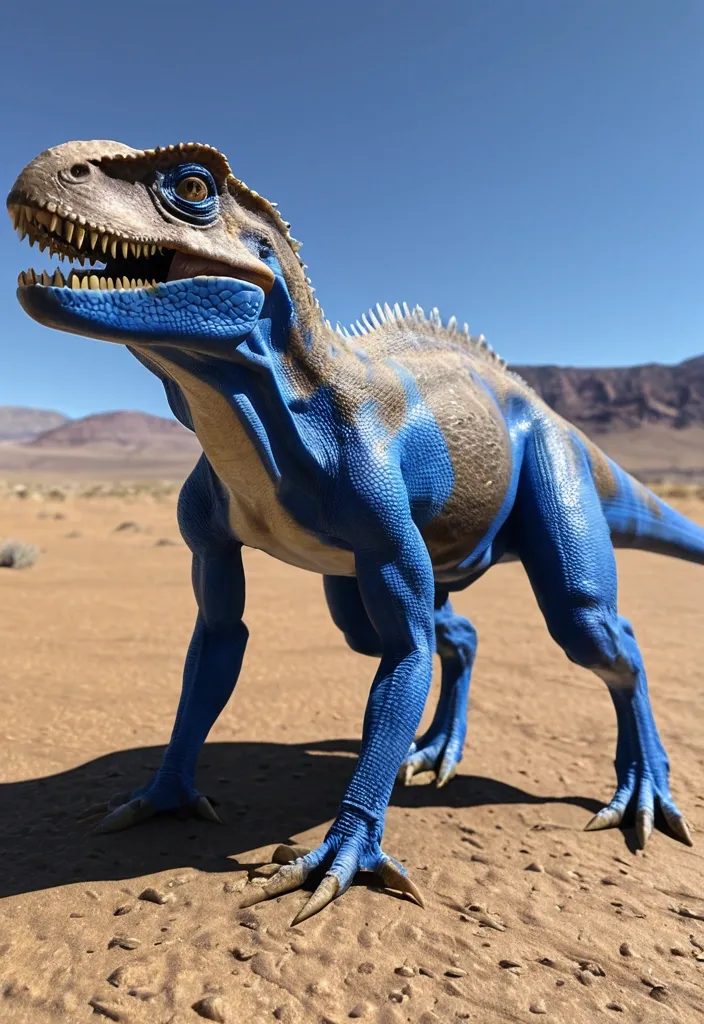
The hybrid was created by modifying the genome of a Tyrannosaurus rex , with the DNA of three other theropod species that were Utahraptor , Saurophaganax , and Giganotosaurus. Also the DNA of Quadrupes like Triceratops , Scelidosaurus , Gigantopithecus. DNA of modern animals such as Greater blue-ringed octopus , Inland Taipan , Northern Short-tailed Shrew , Komodo Dragon , Opossum , Mongoose , Whiptail Lizard , Cuttlefish , and Tardigrades. The genome of Tyrannosaurus rex , Utahraptor , Saurophaganax , and Giganotosaurus was used as the base genome for the hybrid. The shape of the headcrest is from the Triceratops. Utahraptor DNA was added for high levels of intelligence and the ability to make plans , decisions and pack hunting. Gigantopithecus DNA added for Knuckle-walking. Triceratops , and Scelidosaurus armor added a biological form of armor that absorbed most of the incoming attacks. Northern short-tailed shrew iron teeth , the Inland taipan's retractable fangs and the Komodo Dragon serrated teeth genome was used to form the teething of the hybrid. Saurophaganax and Gigantopithecus DNA added the presence of long strong arms with slashing hook claws and the use of tools. Cuttlefish genes were intended to help the hybrid withstand an accelerated growth , but it also added chromatophore cells in the skin so it could change the shape , color , and texture of its skin like a cuttlefish. Opossum , Mongoose and Tardigrades DNA was added for the hybrid to be more resistant to climate changes , harmful toxins or bacterial infections , while tardigrades also added survival of extreme conditions such as exposure to extreme temperatures , extreme pressures , air deprivation , radiation , dehydration , and starvation. Northern short-tailed shrew , the Inland Taipan , Greater blue-ringed octopus and the Komodo Dragon's DNA also added special cavities and glands in the skull that gave her infrared vision , and highly toxic saliva. Said DNA also gave her the ability to open her mandibles and jaws as wide as a snake , specifically at around 90 degrees.Lastly , DNA from a whiptail lizard was added for reproduction purposes. ,
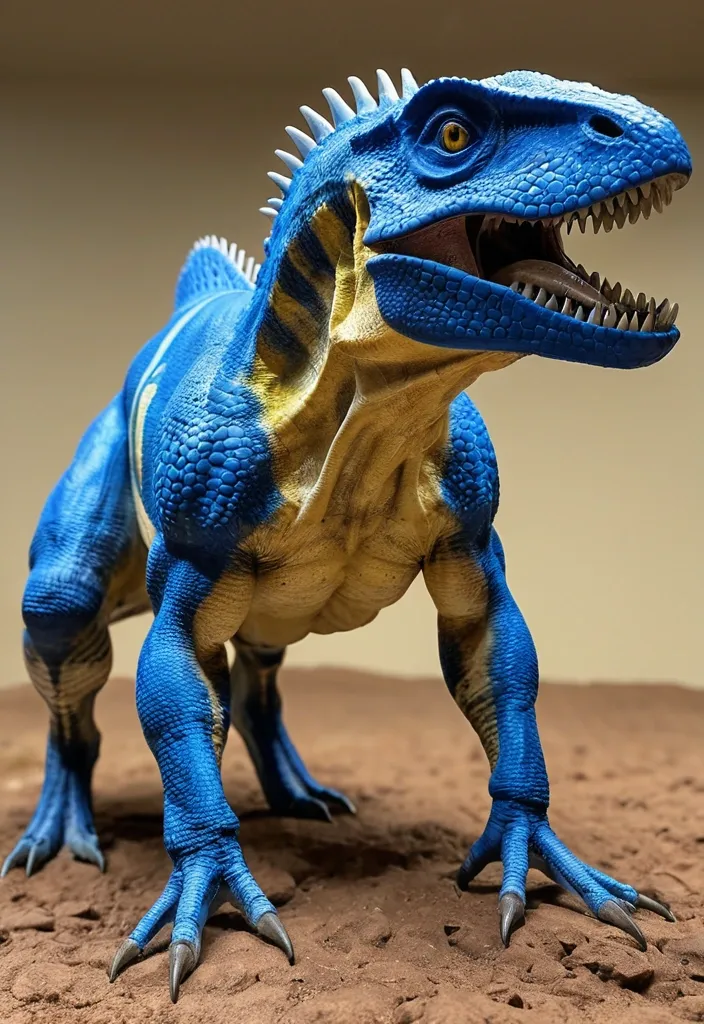
The hybrid was created by modifying the genome of a Tyrannosaurus rex , with the DNA of three other theropod species that were Utahraptor , Saurophaganax , and Giganotosaurus. Also the DNA of Quadrupes like Triceratops , Scelidosaurus , Gigantopithecus. DNA of modern animals such as Greater blue-ringed octopus , Inland Taipan , Northern Short-tailed Shrew , Komodo Dragon , Opossum , Mongoose , Whiptail Lizard , Cuttlefish , and Tardigrades. The genome of Tyrannosaurus rex , Utahraptor , Saurophaganax , and Giganotosaurus was used as the base genome for the hybrid. The shape of the headcrest is from the Triceratops. Utahraptor DNA was added for high levels of intelligence and the ability to make plans , decisions and pack hunting. Gigantopithecus DNA added for Knuckle-walking. Triceratops , and Scelidosaurus armor added a biological form of armor that absorbed most of the incoming attacks. Northern short-tailed shrew iron teeth , the Inland taipan's retractable fangs and the Komodo Dragon serrated teeth genome was used to form the teething of the hybrid. Saurophaganax and Gigantopithecus DNA added the presence of long strong arms with slashing hook claws and the use of tools. Cuttlefish genes were intended to help the hybrid withstand an accelerated growth , but it also added chromatophore cells in the skin so it could change the shape , color , and texture of its skin like a cuttlefish. Opossum , Mongoose and Tardigrades DNA was added for the hybrid to be more resistant to climate changes , harmful toxins or bacterial infections , while tardigrades also added survival of extreme conditions such as exposure to extreme temperatures , extreme pressures , air deprivation , radiation , dehydration , and starvation. Northern short-tailed shrew , the Inland Taipan , Greater blue-ringed octopus and the Komodo Dragon's DNA also added special cavities and glands in the skull that gave her infrared vision , and highly toxic saliva. Said DNA also gave her the ability to open her mandibles and jaws as wide as a snake , specifically at around 90 degrees.Lastly , DNA from a whiptail lizard was added for reproduction purposes. ,
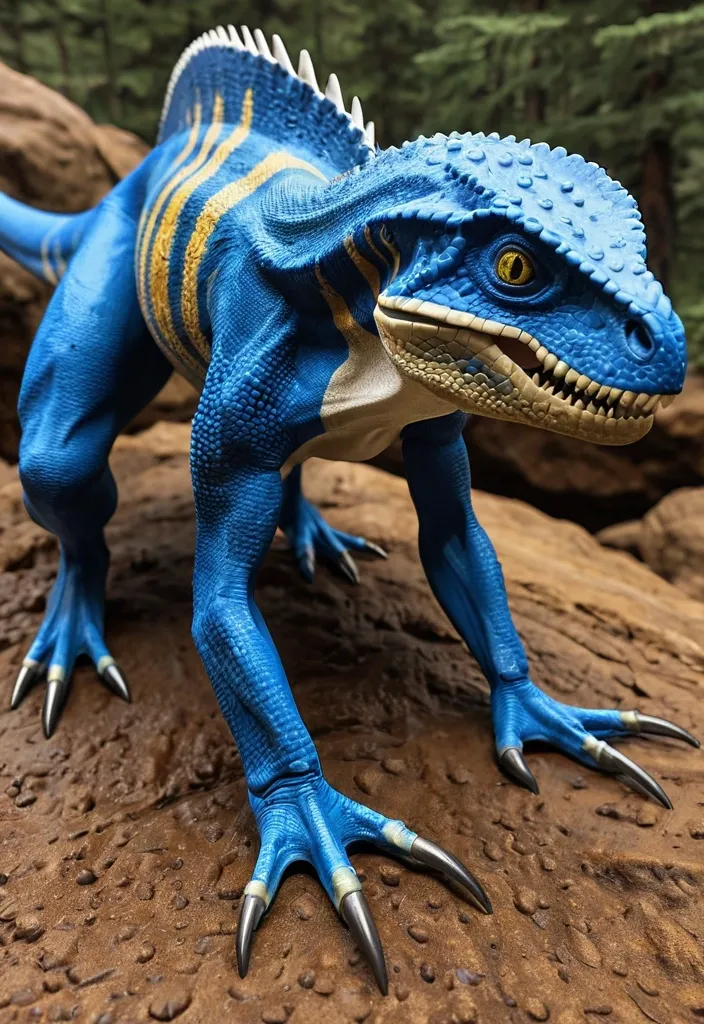
The hybrid was created by modifying the genome of a Tyrannosaurus rex , with the DNA of three other theropod species that were Utahraptor , Saurophaganax , and Giganotosaurus. Also the DNA of Quadrupes like Triceratops , Scelidosaurus , Gigantopithecus. DNA of modern animals such as Greater blue-ringed octopus , Inland Taipan , Northern Short-tailed Shrew , Komodo Dragon , Opossum , Mongoose , Whiptail Lizard , Cuttlefish , and Tardigrades. The genome of Tyrannosaurus rex , Utahraptor , Saurophaganax , and Giganotosaurus was used as the base genome for the hybrid. The shape of the headcrest is from the Triceratops. Utahraptor DNA was added for high levels of intelligence and the ability to make plans , decisions and pack hunting. Gigantopithecus DNA added for Knuckle-walking. Triceratops , and Scelidosaurus armor added a biological form of armor that absorbed most of the incoming attacks. Northern short-tailed shrew iron teeth , the Inland taipan's retractable fangs and the Komodo Dragon serrated teeth genome was used to form the teething of the hybrid. Saurophaganax and Gigantopithecus DNA added the presence of long strong arms with slashing hook claws and the use of tools. Cuttlefish genes were intended to help the hybrid withstand an accelerated growth , but it also added chromatophore cells in the skin so it could change the shape , color , and texture of its skin like a cuttlefish. Opossum , Mongoose and Tardigrades DNA was added for the hybrid to be more resistant to climate changes , harmful toxins or bacterial infections , while tardigrades also added survival of extreme conditions such as exposure to extreme temperatures , extreme pressures , air deprivation , radiation , dehydration , and starvation. Northern short-tailed shrew , the Inland Taipan , Greater blue-ringed octopus and the Komodo Dragon's DNA also added special cavities and glands in the skull that gave her infrared vision , and highly toxic saliva. Said DNA also gave her the ability to open her mandibles and jaws as wide as a snake , specifically at around 90 degrees.Lastly , DNA from a whiptail lizard was added for reproduction purposes. ,

The hybrid was created by modifying the genome of a Tyrannosaurus rex , with the DNA of three other theropod species that were Utahraptor , Saurophaganax , and Giganotosaurus. Also the DNA of Quadrupes like Triceratops , Scelidosaurus , Gigantopithecus. DNA of modern animals such as Greater blue-ringed octopus , Inland Taipan , Northern Short-tailed Shrew , Komodo Dragon , Opossum , Mongoose , Whiptail Lizard , Cuttlefish , and Tardigrades. The genome of Tyrannosaurus rex , Utahraptor , Saurophaganax , and Giganotosaurus was used as the base genome for the hybrid. The shape of the headcrest is from the Triceratops. Utahraptor DNA was added for high levels of intelligence and the ability to make plans , decisions and pack hunting. Gigantopithecus DNA added for Knuckle-walking. Triceratops , and Scelidosaurus armor added a biological form of armor that absorbed most of the incoming attacks. Northern short-tailed shrew iron teeth , the Inland taipan's retractable fangs and the Komodo Dragon serrated teeth genome was used to form the teething of the hybrid. Saurophaganax and Gigantopithecus DNA added the presence of long strong arms with slashing hook claws and the use of tools. Cuttlefish genes were intended to help the hybrid withstand an accelerated growth , but it also added chromatophore cells in the skin so it could change the shape , color , and texture of its skin like a cuttlefish. Opossum , Mongoose and Tardigrades DNA was added for the hybrid to be more resistant to climate changes , harmful toxins or bacterial infections , while tardigrades also added survival of extreme conditions such as exposure to extreme temperatures , extreme pressures , air deprivation , radiation , dehydration , and starvation. Northern short-tailed shrew , the Inland Taipan , Greater blue-ringed octopus and the Komodo Dragon's DNA also added special cavities and glands in the skull that gave her infrared vision , and highly toxic saliva. Said DNA also gave her the ability to open her mandibles and jaws as wide as a snake , specifically at around 90 degrees.Lastly , DNA from a whiptail lizard was added for reproduction purposes. ,
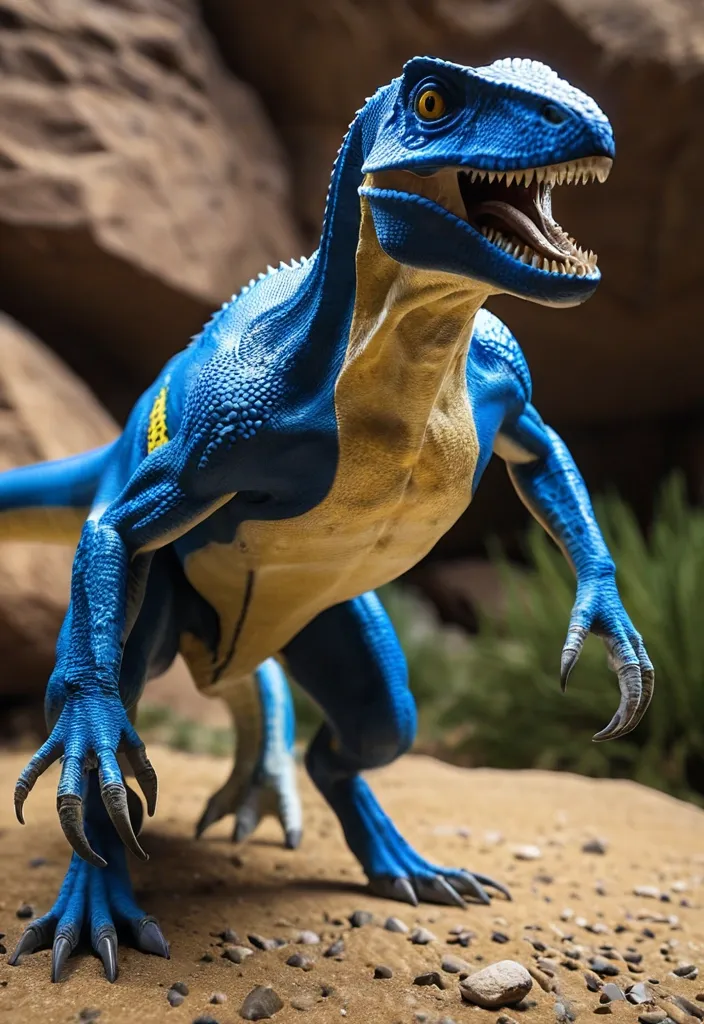
The hybrid was created by modifying the genome of a Tyrannosaurus rex , with the DNA of three other theropod species that were Utahraptor , Saurophaganax , and Giganotosaurus. Also the DNA of Quadrupes like Triceratops , Scelidosaurus , Gigantopithecus. DNA of modern animals such as Greater blue-ringed octopus , Inland Taipan , Northern Short-tailed Shrew , Komodo Dragon , Opossum , Mongoose , Whiptail Lizard , Cuttlefish , and Tardigrades. The genome of Tyrannosaurus rex , Utahraptor , Saurophaganax , and Giganotosaurus was used as the base genome for the hybrid. The shape of the headcrest is from the Triceratops. Utahraptor DNA was added for high levels of intelligence and the ability to make plans , decisions and pack hunting. Gigantopithecus DNA added for Knuckle-walking. Triceratops , and Scelidosaurus armor added a biological form of armor that absorbed most of the incoming attacks. Northern short-tailed shrew iron teeth , the Inland taipan's retractable fangs and the Komodo Dragon serrated teeth genome was used to form the teething of the hybrid. Saurophaganax and Gigantopithecus DNA added the presence of long strong arms with slashing hook claws and the use of tools. Cuttlefish genes were intended to help the hybrid withstand an accelerated growth , but it also added chromatophore cells in the skin so it could change the shape , color , and texture of its skin like a cuttlefish. Opossum , Mongoose and Tardigrades DNA was added for the hybrid to be more resistant to climate changes , harmful toxins or bacterial infections , while tardigrades also added survival of extreme conditions such as exposure to extreme temperatures , extreme pressures , air deprivation , radiation , dehydration , and starvation. Northern short-tailed shrew , the Inland Taipan , Greater blue-ringed octopus and the Komodo Dragon's DNA also added special cavities and glands in the skull that gave her infrared vision , and highly toxic saliva. Said DNA also gave her the ability to open her mandibles and jaws as wide as a snake , specifically at around 90 degrees.Lastly , DNA from a whiptail lizard was added for reproduction purposes. ,

The hybrid was created by modifying the genome of a Tyrannosaurus rex , with the DNA of three other theropod species that were Utahraptor , Saurophaganax , and Giganotosaurus. Also the DNA of Quadrupes like Triceratops , and Scelidosaurus. DNA of modern animals such as Greater blue-ringed octopus , Inland Taipan , Northern Short-tailed Shrew , Komodo Dragon , Opossum , Mongoose , Gigantopithecus , Whiptail Lizard , Cuttlefish , and Tardigrades. The genome of Tyrannosaurus rex , Triceratops and Giganotosaurus was used as the base genome for the hybrid. Including the shape of the head in some parts from Giganotosaurus and Triceratops. Utahraptor DNA was added for high levels of intelligence and the ability to make plans , decisions and pack hunting. Reduced hind legs and Ape DNA added Knuckle-walking Quadruped. Triceratops , and Scelidosaurus were added to act as a biological form of armor that absorbed most of the incoming attacks. Northern short-tailed shrew , the Inland taipan's retractable fangs and the Komodo Dragon DNA was used to form the teeth of the Indominus that were used to tear through the flesh and armor of opponents. Saurophaganax and Gigantopithecus DNA added the presence of long strong arms with slashing hook claws and the use of tools. A swipe of the hybrid's claws would take down bigger opponents. While using tools for smaller elusive prey. Cuttlefish genes were intended to help the Venenosus withstand an accelerated growth , but it also added chromatophore cells in the skin so it could change the shape , color , and texture of its skin like a cuttlefish. Opossum , Mongoose and Tardigrades DNA was added for the Venenosus to be more resistant to climate changes , harmful toxins or bacterial infections , while tardigrades also added survival of extreme conditions such as exposure to extreme temperatures , extreme pressures , air deprivation , radiation , dehydration , and starvation. They have several defense mechanisms , including: A metabolic rate that gets as low as 0.01 percent of the normal rate. Organs protected by a sugary gel called trehalose. A protein that shields their DNA from radiation harm. Synthesis of cryoprotectant in chilly temperatures to prevent the development of ice crystals.Northern short-tailed shrew , the Inland Taipan , Greater blue-ringed octopus and the Komodo Dragon's DNA also added special cavities and glands in the skull that gave her infrared vision , and highly toxic saliva. Said DNA also gave her the ability to open her mandibles and jaws as wide as a snake , specifically at around 90 degrees.Lastly , DNA from a whiptail lizard was added for reproduction purposes. ,
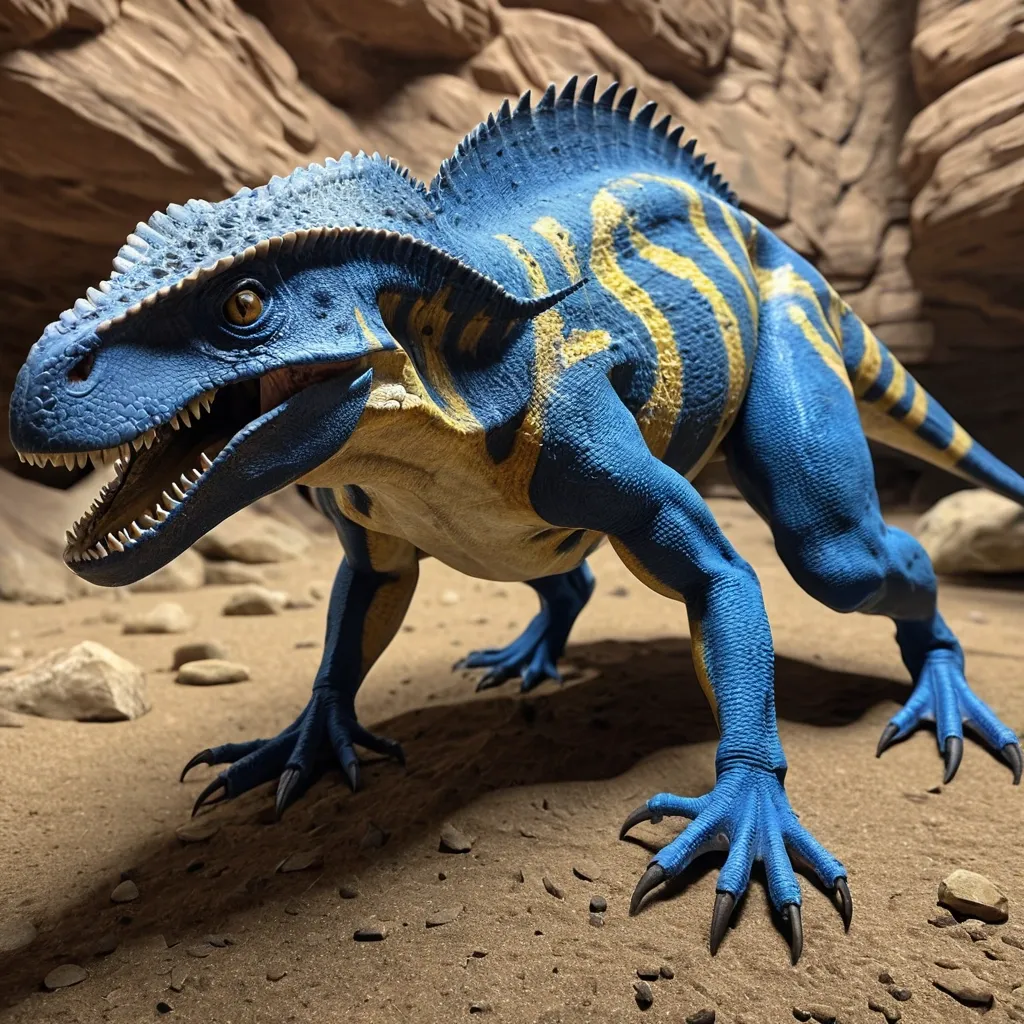
The hybrid was created by modifying the genome of a Tyrannosaurus rex , with the DNA of three other theropod species that were Utahraptor , Saurophaganax , and Giganotosaurus. Also the DNA of Quadrupes like Triceratops , and Scelidosaurus. DNA of modern animals such as Greater blue-ringed octopus , Inland Taipan , Northern Short-tailed Shrew , Komodo Dragon , Opossum , Mongoose , Gigantopithecus , Whiptail Lizard , Cuttlefish , and Tardigrades. The genome of Tyrannosaurus rex , Triceratops and Giganotosaurus was used as the base genome for the hybrid. Including the shape of the head in some parts from Giganotosaurus and Triceratops. Utahraptor DNA was added for high levels of intelligence and the ability to make plans , decisions and pack hunting. Reduced hind legs and Ape DNA added Knuckle-walking Quadruped. Triceratops , and Scelidosaurus were added to act as a biological form of armor that absorbed most of the incoming attacks. Northern short-tailed shrew , the Inland taipan's retractable fangs and the Komodo Dragon DNA was used to form the teeth of the Indominus that were used to tear through the flesh and armor of opponents. Saurophaganax and Gigantopithecus DNA added the presence of long strong arms with slashing hook claws and the use of tools. A swipe of the hybrid's claws would take down bigger opponents. While using tools for smaller elusive prey. Cuttlefish genes were intended to help the Venenosus withstand an accelerated growth , but it also added chromatophore cells in the skin so it could change the shape , color , and texture of its skin like a cuttlefish. Opossum , Mongoose and Tardigrades DNA was added for the Venenosus to be more resistant to climate changes , harmful toxins or bacterial infections , while tardigrades also added survival of extreme conditions such as exposure to extreme temperatures , extreme pressures , air deprivation , radiation , dehydration , and starvation. They have several defense mechanisms , including: A metabolic rate that gets as low as 0.01 percent of the normal rate. Organs protected by a sugary gel called trehalose. A protein that shields their DNA from radiation harm. Synthesis of cryoprotectant in chilly temperatures to prevent the development of ice crystals.Northern short-tailed shrew , the Inland Taipan , Greater blue-ringed octopus and the Komodo Dragon's DNA also added special cavities and glands in the skull that gave her infrared vision , and highly toxic saliva. Said DNA also gave her the ability to open her mandibles and jaws as wide as a snake , specifically at around 90 degrees.Lastly , DNA from a whiptail lizard was added for reproduction purposes. ,

